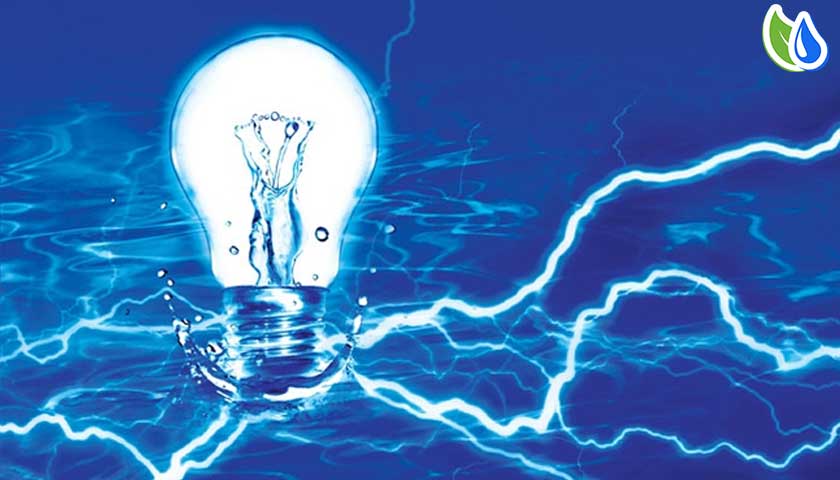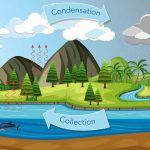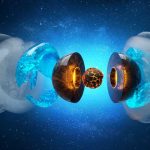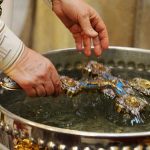
What is electricity?
Electricity is the energy generated by the movements of electrons (negative charge) and positrons (positive charge) within conductive materials.
Opposites attract. Positive and negative charges come together, creating two types of energy: Static electricity (generated by friction) and dynamic electricity (known as a current).
Hydroelectric energy
A study by NASA states that the origin of life may be found in the electricity generated naturally on the sea floor some 4,000 million years ago. Water and movement are a source of life and, thus, also a source of energy.
Our ancestors knew this and used the currents in rivers to move large mills. More sophisticated versions of these water mills are used in hydro-electric power plants. A dam blocks a river with a concrete wall, flooding the area around the plant and creating an artificial lake. The retained water harbours enormous potential energy.
Water is one of the strongest and most powerful forces of nature. That torrent can be converted into kinetic energy (the energy of a body in motion). Under the force of gravity, the water travels downward through a series of large pipes called penstocks. This makes the blades of the turbines spin quickly.
The turbines supply mechanical energy to the plant’s electric generators. A transformer increases the electric power and transmits it to the power grid, which then supplies power to your TV or washing machine.
Tidal energy
A lesser-known variant of hydroelectric energy in tidal energy.
This system utilises the vertical movement of seawater, which is caused by the gravitational force of the moon and sun on the sea. The ebb and flow of the tides generates tidal power.
At present, there are three different types of tidal power plants:
Tidal barrages: built at river mouths, tidal barrages are quite similar to hydropower plants. They harness the potential energy generated by the difference in height between high and low tides. Although they produce large amounts of energy, these facilities are quite costly to build and maintain.
Tidal stream generators: the tidal flows drive a series of axial turbines, similar to wind turbines, which generate mechanical energy. This is the simplest and most economical method, with the lowest impact on nature. As no dam needs to be built, it does not alter the ecosystem in the sea.
Dynamic tidal power: this method is merely theoretical, as it has never yet been successfully applied. It would combine the two methods described above. To do this, dams would be built off the coast and further out to sea creating a T-shaped structure that, on one side, would retain the force of the high tides and, on the other, the energy of the low tides.
Tidal energy stems from the movement of water caused by the high/low tide cycle.
Geothermal energy
Moving out of the water and onto dry land, let us know look at geothermal energy, a system which uses the heat stored inside the earth, in hot rocks and/or hot springs.
The thermal energy contained under our feet is tremendous. By simply digging to a depth of some 10 metres, we find temperatures of around 17°C year-r due to the thermal inertia of the soil.
To harness this energy, geothermal heat pumps are used to extract heat from the earth or release heat into it, depending on whether the goal is to heat or cool the air, or to heat water.
One of the most precise methods is to inject liquid water deep into the earth to raise its temperature; the water is turned to steam and returns to the plant carrying a great deal of energy, ready to be transformed into electricity.
This energy can be used for different purposes depending on the characteristics of the source:
Resources at high temperatures (over 150°C) are used to generate light.
Below 100°C they are used to supply electricity to heating/air conditioning systems.
At very low temperatures (less than 30°C) they are used directly for heating water.
Source: https://www.endesa.com/en/discover-energy/energy-and-more/how-electricity-is-generated





الكهرباء هي عبقرية العصر الحديث. إنه لأمر رائع كيف يتم توليد الطاقة من خلال حركة الإلكترونات والبوزترونات. أحب أن أفهم كيف يمكن للكهرباء الساكنة والديناميكية أن تؤثر في حياتنا اليومية. وفيما يتعلق بالطاقة الهيدروكتريكية، فإنها كأن الطبيعة تقدم لنا هدية مزدوجة – قوة المياه الجارية المستخدمة لاحتياجاتنا. ببساطة رائعة!
電気は素晴らしいものですね。電子と陽電子の動きから生まれるエネルギーには感動します。静電気と動的電気の相互作用は、現代のテクノロジーを支えています。水力発電は、自然の恩恵を利用してエネルギーを生み出す素晴らしい方法ですね。
La electricidad es una maravilla moderna. Es fascinante cómo la energía se genera a partir de los movimientos de electrones y positrones. Me encanta aprender sobre la electricidad estática y dinámica, especialmente porque afecta nuestras vidas diarias. Y la energía hidroeléctrica es otro ejemplo asombroso de cómo podemos aprovechar la naturaleza para obtener electricidad sostenible.
Electricity is like magic flowing through our lives. I’ve always marveled at the fact that it’s generated by the dance of electrons and positrons. It’s incredible how something as simple as the movement of charges can power our homes and gadgets. And when it comes to hydroelectric energy, it’s like nature is providing us with a double treat – the power of flowing water harnessed for our needs. Just amazing!
Excellent article. Thanks